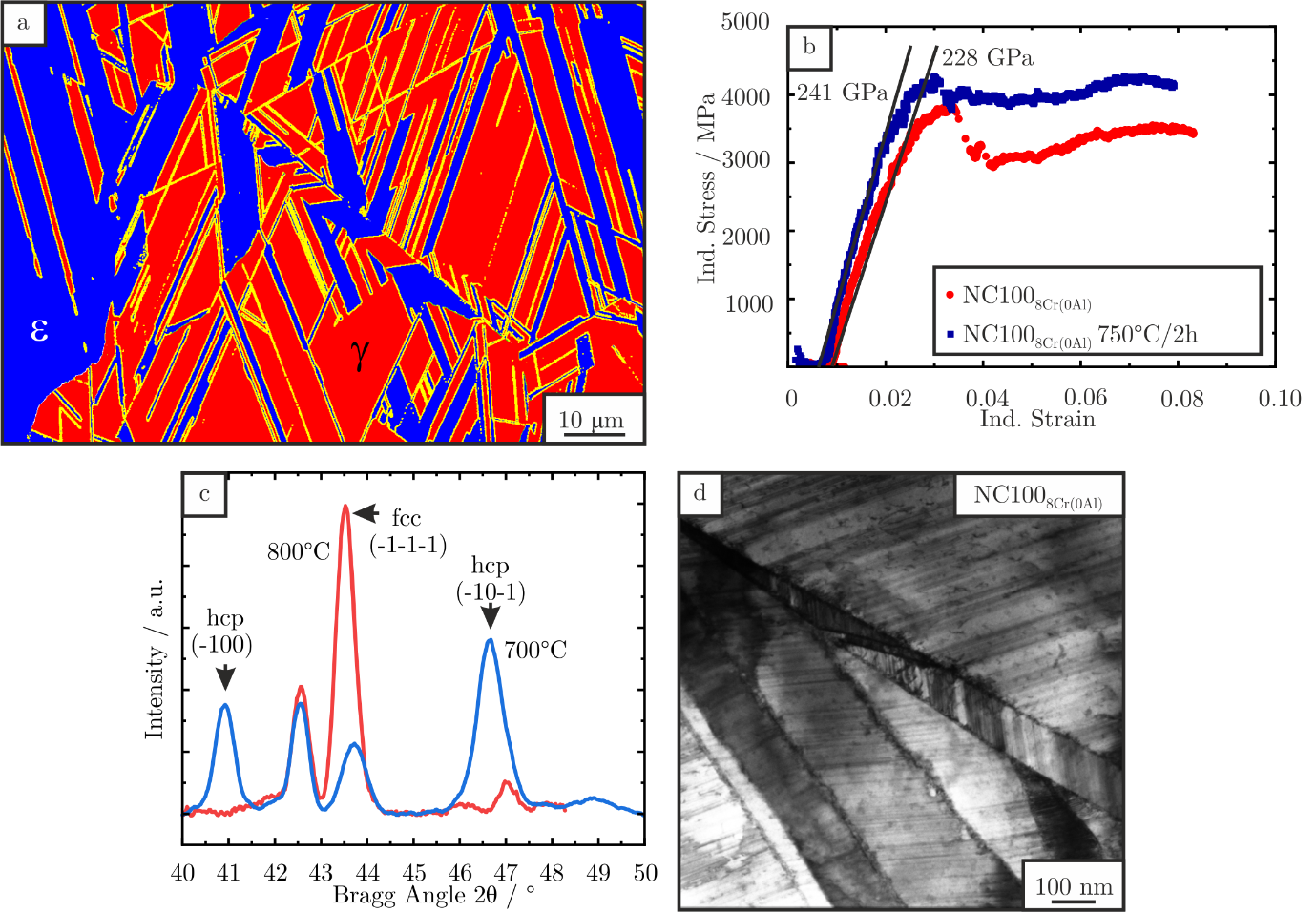Mechanical properties of deformation induced interfaces on medium and high entropy Alloys
Subject area:
High Temperature Materials
Responsible Employees:
PD Dr. Steffen Neumeier
Prof. Dr. Benoit Merle
Manuel Köbrich (M. Sc.)

Highly alloyed material systems, based on Co, Ni or Fe have gained huge scientific interest in the last few decades. With the improvement of electron microscopy, the opportunity to analyse and characterize their broad variety of deformation mechanisms and therefore outstanding mechanical properties is enabled. High temperature steels based on FeNiCr which show remarkable mechanical properties, oxidation resistance as well as good processing and economical aspects are used widely. The project will focus on the influence of interstitial elements and especially on the impact of Nitrogen N. N enhances the metallic bonding character, stabilizes the austenitic region and therefore highly improves strength while maintain ductility. In Addition N influences the stacking fault energy which leads to different deformation mechanisms depending on the amount of nitrogen. A second focus in this project will be the investigation of elemental Segregation towards deformation induced interfaces. These Segregation processes of additional elements cause further alteration of deformation mechanisms from stabilization of microtwins to phase transformation.
This project is part of the doctoral program GRK 1896: In situ Microscopy with Electrons, X-rays and Scanning Probes. Research activities will concentrate on the following:
- Micro- and nanomechanical testing of deformation induced interfaces
- Detailed analysis of deformation mechanisms and the influence of Elemental Segregation with correlative microscopy
- Influence of interstitial Elements (Nitrogen, Hydrogen,…) on mechanical properties.